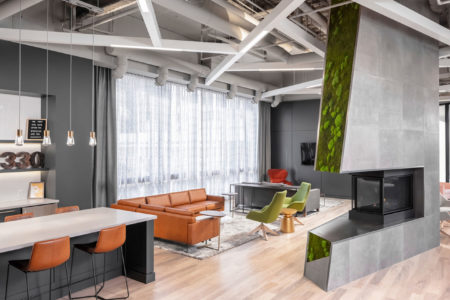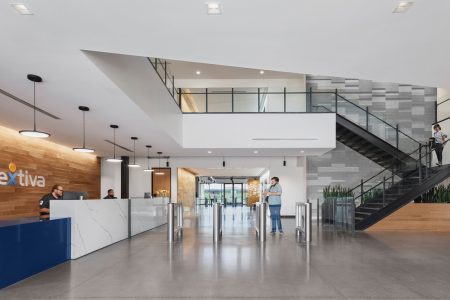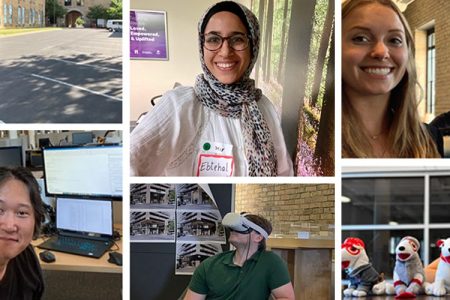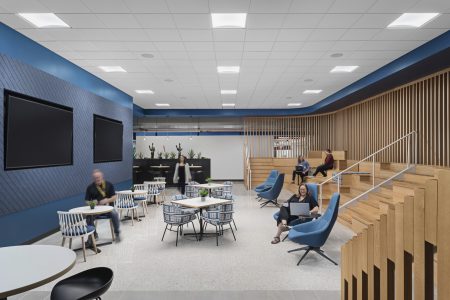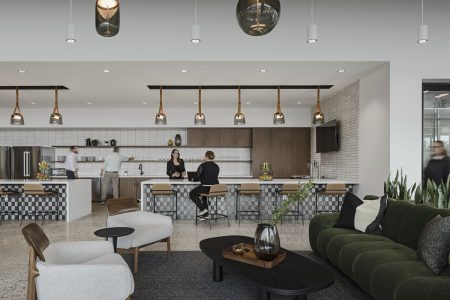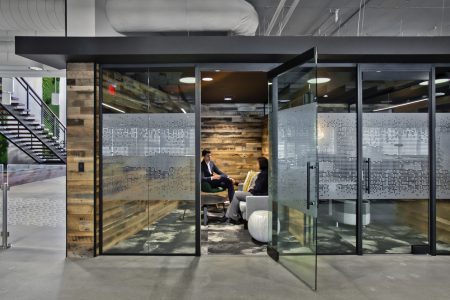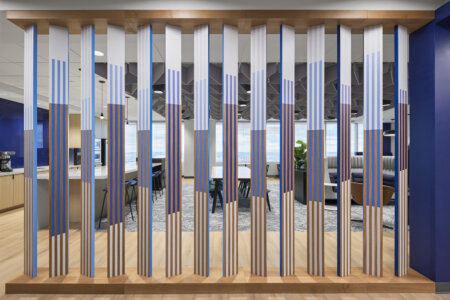The Gen Z Vibe is Making Work Better for Everyone
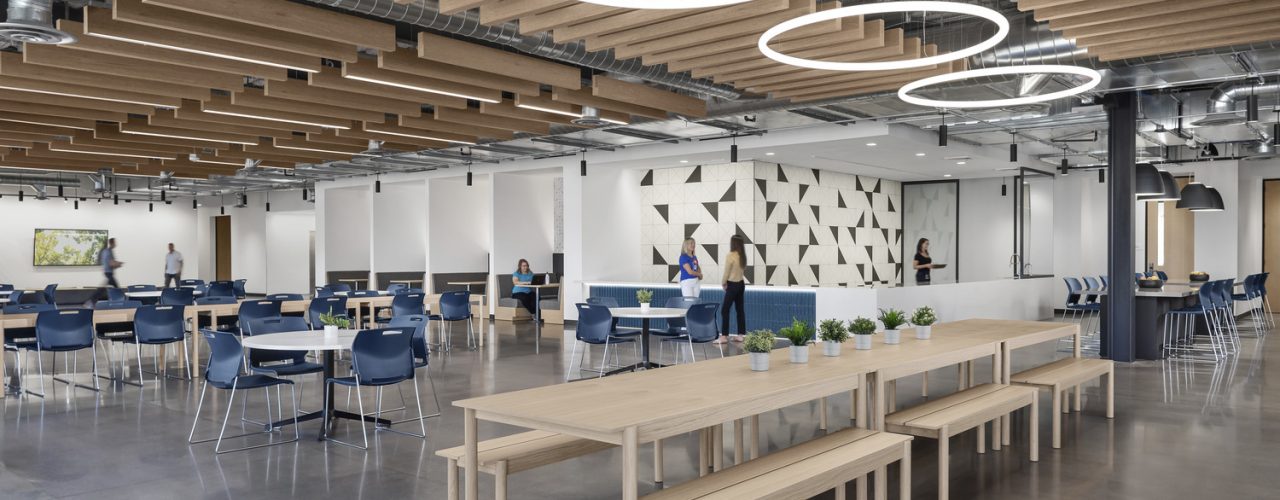
RSP’s Kelsey Sullivan explains how designing offices and policies for Gen Z can lift morale and work/life balance for workers of every generation.
*This article was originally published in Work Design Magazine.
Perhaps more than experienced workers, those in Generation Z just entering the workforce over the last few years have been asked to adapt to greater and more frequent workplace changes. And for the most part, they are rising to the challenge. I would argue, they are even making adjustments to create a better workplace for employees of all ages, as long as others are willing to be receptive to change.
A Profile of the Future Worker
The vast majority of Generation Z are still teens, but they will make up more than a quarter of the workforce by 2025. And they are already making their voices heard. Like younger Millennials, Gen Z or “Zoomers” have been dubbed “digital natives” by the media. They grew up with always-on internet and social media. But how does that experience translate to adulthood and how they interact in the workplace?
Growing up with the ability to access nearly any information in seconds means that Gen Z is multi-talented with wide-ranging interests. Many are independent and entrepreneurial in their thinking. They are socially aware with a strong emphasis on politics and what’s happening in the world, and they are poised to become the most educated generation in history. They have a declining confidence in institutions, especially those previous generation held dear, and are not without cynicism. But, at the same time, growing up during the Great Recession alongside increased gun violence and civil unrest, and the fact that they are more racially, ethnically, and culturally diverse than any previous generation, has made them pragmatic, understanding and kind. They believe in making the world a better place and they just might do it.
In the office, all of these characteristics amount to a very different employee than we’ve seen in the past. Gen Z is open to, and even excited by, a non-linear career path with the ability and opportunity to try new things. They are open communicators with both managers and peers. They expect transparency with policies, assignments and salaries. And they are much more casual about everything, from communication to attire.
Making Work Better
So, what does Gen Z look for in a workplace? What would they like to change about traditional corporate culture? Plenty. And if the rest of us are honest, we would benefit from these things too.
Members of Gen Z want and expect more autonomy to do their work where and when they choose. They want to be judged on their skills and how well they do their jobs, rather than how well they adopt a corporate dress code or play by the rules. They demand the right technology and reward employers by easily adapting to new software and platforms. And above all, they want a healthier work/life relationship than older generations have experienced—having the ability to spend an adequate amount of time with family, friends, pets and hobbies is non-negotiable. Some members of leadership may balk at this philosophy, but it prevents burnout and has the potential to actually increase productivity. Just ask countries like Norway and France.
Hybrid of the Future
Gen X and Millennials may have come up with the hybrid work model, but by all accounts, Gen Z is going to make it stick. Current Gen Z employees entered the workforce when most knowledge workers were 100% remote. Many have no desire to sit at a desk 9-5, Monday-Friday, or commute long distances. Equally, leadership and some of these younger employees recognize that facetime, mentorship, collaboration, and company culture take a major hit when everyone is remote.
The hybrid work model offers the best of both. Gen Z has indicated that this is by far their preferred way to work (according to a recent study by McKinsey, younger employees say they are 59 percent more likely to leave than older ones if hybrid work is no longer available). It allows them to explore personal interests and even create multiple streams of income when one job isn’t enough. Their entrepreneurial spirit gives them the creativity, flexibility and self-discipline to make the hybrid model viable for the long term.
Designing Offices for Zoomers
So far, most of the things I’ve detailed relate to policy and culture. But design, as always, is a critical component to making an office work. This may be especially true for the hybrid model.
For Gen Z, office design is not just about aesthetics, although they lean toward a minimalistic, less cluttered approach with lots of natural light, biophilic elements, and sustainable materials. The future workplace is full of flexible spaces that give Zoomers, and everyone else, that all-important autonomy to choose where and when they do their work. From a design standpoint, whether it’s a stand-alone office or a vast portfolio of spaces for the largest companies, we are using fewer hard-wall environments and opting instead for more flexible furniture and materials, with a strong emphasis on acoustics, natural light, and environmentally conscious products.
Creating different work zones is something we’ve been doing for a while for many of our clients, and it’s only becoming a stronger trend as more Zoomers enter the workforce. We are designing far fewer individual workstations with chairs designed for 5+-hour sits, since we now know how detrimental this is to long-term health. Instead, we have privacy pods and nooks with acoustical space division for heads-down, focused work, punctuated with collaboration spaces like breakout zones and comfortable spots for informal and formal meetings. In alignment with a more informal communication style, office layouts are also trending toward unassigned seating even for leadership with more transparency and accessibility to managers than we might have seen in generations past.
Gen Z, like Millennials, grew up hearing about the dire consequences of the climate crisis, so WELL and LEED certification are important, but it’s even more important to move toward truly carbon neutral companies with systems in place to allow individuals to create less waste with their daily choices. That means having space for recycling and composting in the office, having reusable materials available, and just generally empowering people to be greener.
The overall vibe is one of comfort and safety with a strong sense of community. Our job is to design offices that make all workers want to stay and feel safe on the days they’re in the office.
And of Course, Technology
With a generation nicknamed the Zoomers, technology is non-negotiable. Younger workers expect seamless systems that work whether they’re working from home, a coffee shop or the office. Continuous communication via chats, video conference and email are preferable to stand-alone, pre-scheduled meetings and they need the software and platforms to back them up.
Design-wise, the technology has to be mobile with more charging stations and fewer cords. A greater variety of technology touchdowns with various screen locations and wireless computer-to-screen communication makes that seamlessness much easier. And after several years of a pandemic, everyone appreciates contactless and automated technology.
Out with the Old Rules
One thing we tend to see with major (confidential) companies, is that more experienced workers find it difficult to accept just how casual the workplace has become. And Gen Z is by far the most casual generation. From slang in office communication to wearing sandals and loungewear to work, by and large, Gen Z does not see the traditional corporate style as indicative of how well someone does their job. It’s a mindset shift that can cause friction between generations if companies don’t have clear policies in place.
On the other hand, the things Gen Z pushes for can be good for everyone else too. Transparent salaries offer equal footing. Pushing for flexible schedules, generous PTO and sabbatical programs means everyone can avoid burnout. Holding companies accountable for their purported values, creating mentorship programs for historically underrepresented populations, advocating for mental health support, and getting involved in diversity, equity and inclusion initiatives, are all part of the Gen Z work experience. And these are things we can all get behind.
If older workers are willing to embrace these changes while offering guidance to Gen Z employees, it will mean better work/life balance, better technology and, hopefully, more productivity and happiness at work for everyone.
Pictured: Nextiva Corporate Headquarters | Photo by Leland Gebhardt Photography

